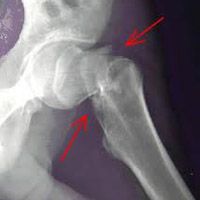Article
Testosterone Levels and Bone Density Show Strong Connection
Author(s):
New research finds that low testosterone levels are strongly associated with low bone density (BMD) - even in relatively young men.

New research finds that low testosterone levels are strongly associated with low bone density (BMD) — even in relatively young men.
A retrospective review of bone mineral density scans performed on 235 consecutive hypogonadal men whose mean age was just 50.7 years found osteopenia in 39% of all patients and osteoporosis in 5%.
All of the men had both physical symptoms of hypogonadism and total testosterone levels below 300 ng/dL. The average duration of their condition — from the first test indicating low testosterone levels to the eventual bone scan — was 1,219 days.
The study team defined osteopenia as a femoral neck, total hip, or total spine BMD T-score between -1 and -2.5. They defined osteoporosis as a BMD T-score in any of those areas of -2.5 or less. The actual scans were performed on a single dual-energy X-ray absorptiometry machine.
Analysis designed to determine whether bone low bone density was associated with other factors such as diabetes, smoking history or body mass index (BMI) found only a single significant tie. Higher BMI was associated with higher bone density (presumably because extra weight creates the sort of load-bearing exercise that can protect against bone changes).
“There is a very high rate of osteopenia and osteoporosis in all male patients with hypogonadism referred to a urologist,” wrote the study team, which presented its findings at the 2015 meeting of the American Urological Association. “This study reiterates the importance of obtaining BMD scans on all male patients with clinical hypogonadism.”
Many prior papers have found a strong connection between low testosterone levels and low bone density, but most of them have focused on older patients.
A 1991 study published in the Journal of the American Geriatrics Society, for example, used data from the McGuire Veterans Affairs Medical Center Nursing Home Care Unit to conclude that hypogonadal men over 65 were 4.6 times as likely to suffer a minimal trauma hip fracture as men with higher testosterone levels.
­A research review published in 2007 by the European Journal of Endocrinology cited nearly a dozen different studies before asserting, “Age-related osteoporosis is now considered to be a consequence of the progressive impairment of the hypothalamic—pituitary–gonadal axis in men and, even though a corresponding dramatic fall of sex hormones as happens in menopause does not occur in men, the continuous slow reduction in circulating androgens, as well as changes in total and bioavailable serum testosterone in men, are strongly related to bone loss.”
Testosterone replacement therapy, moreover, is associated with improvements to bone mineral density, particularly when it is undertaken in conjunction with strength training. Indeed, a recent review of 75 years worth of research, which was published in Mayo Clinical Proceedings this year, deemed bone density improvements to be among the best-established benefits of testosterone replacement. (Another research review, this one published in the American Journal of Physiology—Endocrinology and Metabolism, found that method of testosterone application might affect the size of the benefit. Studies that used testosterone injections tended to find greater increases in BMD than studies that used transdermal testosterone.)
Preventing osteoporosis is particularly important for younger men, the authors of the new study wrote, and the results of their research suggests that all men who are found to be hypogonadal be tested for bone density and treated properly.





